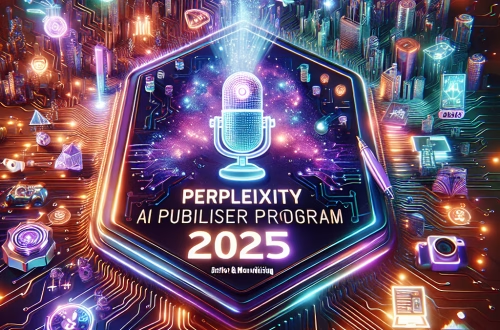Claude API vs Amazon Bedrock Pricing StructureSummary:
Summary:
This article compares the pricing structures of Anthropic’s Claude API and Amazon Bedrock for AI novices. Claude API uses a token-based pay-as-you-go model with tiered rates based on input/output volumes, while Amazon Bedrock offers a hybrid approach combining usage-based pricing with AWS infrastructure discounts. These models impact cost predictability, scalability, and integration flexibility for startups and enterprises alike. Understanding these differences helps users optimize expenses when deploying large language models (LLMs) for chatbots, content generation, or data analysis. Pricing transparency and AWS ecosystem integration are key factors developers must evaluate based on project requirements.
What This Means for You:
- Cost Predictability Varies Significantly: Claude API’s per-token pricing offers simpler upfront calculations for small projects, while Bedrock’s volume discounts better suit enterprises. Monitor your token usage through Anthropic’s console before scaling to avoid billing surprises with either platform.
- Integration Affects Hidden Costs: If you already use AWS services (S3, Lambda), Bedrock’s native integration reduces development time but may require dedicated cloud expertise. For standalone AI applications, Claude API minimizes infrastructure dependencies through direct API calls.
- Early Optimization Pays Dividends: Use Claude’s Haiku model (cheapest tier) for prototyping before switching to Bedrock’s Claude Opus for high-volume production. Always benchmark response times against costs – sometimes paying more for faster inference saves operational overhead.
- Future Outlook or Warning: Expect price volatility as both platforms expand model capabilities. Bedrock may introduce committed-use discounts, while Claude could adjust token rates for newer models. Budget 20-30% extra for pricing changes during long-term projects, and avoid vendor lock-in by architecting modular AI workflows.
Explained: Claude API vs Amazon Bedrock Pricing Structure:
Core Pricing Models Compared
Claude API employs a transparent per-token billing system across three model tiers (Haiku, Sonnet, Opus), with separate costs for input ($0.25-$15/million tokens) and output ($1.25-$75/million tokens). Amazon Bedrock uses similar token-based pricing but adds AWS-specific variables – data transfer fees, optional Provisioned Throughput commitments ($/hour), and regional pricing variations (US vs. Asia Pacific).
Breakdown of Cost Drivers
Claude API Strengths:
– Simpler forecasting for projects under $5k/month
– No minimum spend or long-term contracts
– Free tier available (limited tokens)
Bedrock Advantages:
– Volume discounts at 10M+ tokens/month
– Bundled billing with other AWS services
– Support for Claude, Llama 2, and Jurassic-2 models under one API
TCO Considerations
For a 500k token/month workload using Claude Opus:
– Claude API Direct: ~$48.75 (input) + $243.75 (output) = $292.50
– Bedrock (us-east-1): ~$43.50 + $217.50 + $15 (data processing) = $276.00
Savings increase with scale – at 5M tokens, Bedrock becomes 12-18% cheaper.
Platform Limitations
Claude API’s rigid tier structure limits granular optimization – you can’t mix Haiku and Opus usage within the same billing cycle without manual adjustments. Bedrock’s multi-model support adds complexity; misconfiguring Provisioned Throughput can lead to $1,500+/month in idle capacity fees.
Architectural Cost Traps
Avoid Bedrock’s “always-on” endpoints for intermittent workloads – they incur hourly charges regardless of usage. With Claude API, recursive AI chains (output feeding into new input) double-dip on token costs – a $10 task can quickly balloon to $45+ without circuit breakers.
Optimization Strategies
1. Hybrid Deployment: Use Claude API for development/testing, Bedrock for production
2. Token Compression: Pre-process inputs to remove redundant data before API calls
3. Geoshifting: Route Bedrock requests through lower-cost regions (avoiding GDPR conflicts)
People Also Ask About:
- Which offers better free tiers? Claude API provides $5 in monthly credits (equivalent to 20k Opus output tokens). Bedrock’s free trial includes 30K input tokens and 30K output tokens across all models for 30 days – better for multi-model experimentation but shorter duration.
- Can I use Claude models cheaper through Bedrock? Yes, for high-volume usage (>3M tokens/month). Bedrock’s Claude Opus is 6.8% cheaper than direct API at scale, but requires AWS expertise to configure cost controls.
- How do error rates affect pricing? Both charge for failed requests – implement exponential backoff in your API client. Claude API has 3% error forgiveness; Bedrock counts all HTTP 500 responses toward billing.
- Which platform scales better? Bedrock handles burst traffic seamlessly via AWS auto-scaling. Claude API requires manual tier upgrades, causing potential throttling during traffic spikes unless you pre-purchase capacity.
Expert Opinion:
Novices should start with Claude API for its predictable costs and simpler documentation, shifting to Bedrock only when achieving >$2k monthly spend or needing multimodal capabilities. Watch for “hidden” Bedrock expenses like VPN data transfer fees and Model Training hours. Emerging competitors like Azure’s Claude integration may pressure both providers to introduce educational discounts through 2024. Always implement usage alerts at 50%/75%/90% of budget thresholds regardless of platform.
Extra Information:
- Anthropic’s Official Pricing Page – Details token costs per model with interactive calculators
- AWS Bedrock Pricing Calculator – Regional cost comparisons with provisioned throughput scenarios
- Third-Party Cost Analysis Tool – Real-time price benchmarking based on your usage patterns
Related Key Terms:
- Token-based pricing AI models comparison guide
- AWS Bedrock Claude Opus cost optimization strategies
- Anthropic API free tier vs enterprise plans
- LLM deployment cost estimation frameworks
- Cost-effective AI model scaling for startups
- Amazon Bedrock hidden fees avoidance checklist
- Claude Haiku vs Sonnet token cost analysis
Check out our AI Model Comparison Tool here: AI Model Comparison Tool
#Claude #API #Amazon #Bedrock #pricing #structure
*Featured image provided by Pixabay





